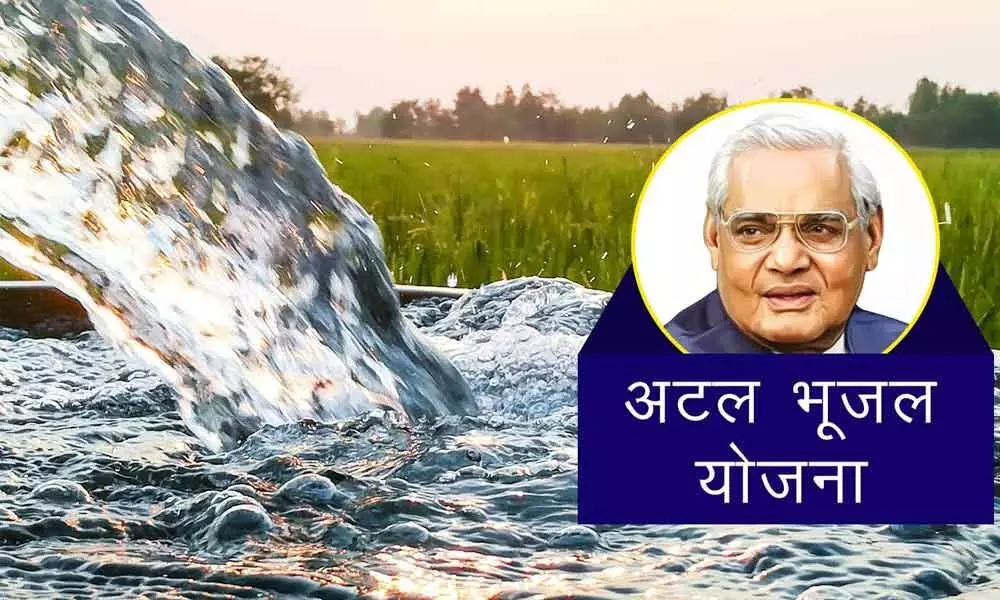Live
- Celebrating the power of communication
- Standing at work can actually be detrimental to BP
- Adani US bribery case reaches SC
- Prez, PM to address special event to mark Constitution Day
- I owe every film of mine to Vijay Sethupathi: Eashvar Karthic
- Achoo! City faces spike in flu, cold, cough cases
- CPM demands TTD to allocate Rs 100 cr every year for Tirupati development
- Oppn pushes for debate on Adani issue, Manipur
- Guv invites Soren to form govt
- Mahayuti allies go into huddle to pick Maha CM
Just In
Centre's move to resolve water woes laudable


Prime Minister Narendra Modi launched the Atal Bhujal Yojana, or Atal Jal on December 25, a day after the Cabinet approved it.
Prime Minister Narendra Modi launched the Atal Bhujal Yojana, or Atal Jal on December 25, a day after the Cabinet approved it.
India is suffering the worst water crisis in its history and millions of lives and livelihoods are under threat, according to the composite water management index released by the government think-tank NITI Aayog in 2018.
Currently, 600 million Indians face high to extreme water stress and about 2,00,000 people die every year due to inadequate access to safe water.
Reflecting on the severity of the issue, the NITI Aayog said that the crisis is only going to get worse. Complicating the issue are the devastating effects of climate change.
Monsoon rains have been more erratic and droughts more common, threatening farmers' harvests. This could cripple livelihoods across the predominantly agricultural country, where 80 % of water is used to irrigate thirsty crops such as sugar cane and rice.
Places like Delhi that are landlocked and don't have access to large bodies of water are the worst affected when rainfall patterns are disturbed.
By 2030, the country's water demand is projected to be twice the available supply, implying severe water scarcity for hundreds of millions of people and an eventual 6 per cent loss in the country's Gross Domestic Product (GDP).
The projects under the scheme, to be completed in the next five years, will help in improving groundwater management in 8,350 villages across seven States where groundwater levels are critically low. These villages are in 78 districts of Gujarat, Haryana, Karnataka, Madhya Pradesh, Maharashtra, Rajasthan and Uttar Pradesh.
It aims at strengthening the institutional framework for participatory groundwater management and bringing about behavioural changes at the community level for sustainable groundwater resource management. Much depends on the farmers who have to draw an action plan and also switch over to less water intensive crops.
It is time, start-ups come up with technology solutions to ensure minimal use of water for various needs. In the last 70 years, only 3 crores out of a total of 18 crores rural households in the country have got access to piped water supply.
The target set by the government is to deliver clean drinking water through pipes to the rest 15 crore homes in the next five years under a recently-launched Jal Jeevan Mission.
The estimated cost of the mission is a whopping Rs 3.60 lakh crore, of which the Central share would be around Rs 2.08 lakh crore. The equation was always stacked against India, which accounts for 16 per cent of the world's population living in less than 2.5 per cent of the global area and has just 4 per cent of the global water resources.
And now demand has started to outstrip supply. According to the Central Water Commission (CWC), the estimated water resources potential of the country, which occurs as natural runoff in the rivers, is 1,999 billion cubic metres.
With the population rising, demand for water will increase manifold in the coming years. A far sight is needed to tackle the problem. Hope politics don't seep into it too and all parties work together to attain the goals.

© 2024 Hyderabad Media House Limited/The Hans India. All rights reserved. Powered by hocalwire.com






